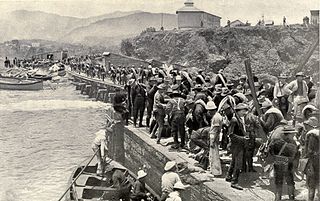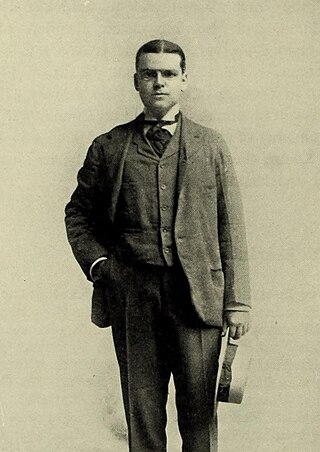Related Research Articles

An alcopop is any of certain mixed alcoholic beverages with relatively low alcohol content, including:
- Malt beverages to which various fruit juices or other flavorings have been added
- Wine coolers: beverages containing wine to which ingredients such as fruit juice or other flavorings have been added
- Mixed drinks containing distilled alcohol and sweet liquids such as fruit juices or other flavourings

Bacardi Limited is the largest privately held, family-owned spirits company in the world. Originally known for its Bacardí brand of white rum, it now has a portfolio of more than 200 brands and labels. Founded in Cuba in 1862 by the Spanish businessmen Facundo Bacardí Massó, Bacardi Limited has been family-owned for seven generations, and employs more than 8,000 people with sales in approximately 170 countries. Bacardi Limited is the group of companies as a whole and includes Bacardi International Limited.

Rum and Coke, or the Cuba libre, is a highball cocktail consisting of cola, rum, and in many recipes lime juice, on ice. Traditionally, the cola ingredient is Coca-Cola ("Coke") and the alcohol is a light rum such as Bacardi; however, the drink may be made with various types of rums and cola brands, and lime juice may or may not be included.

Mojito is a traditional Cuban punch. The cocktail often consists of five ingredients: white rum, sugar, lime juice, soda water, and mint. Its combination of sweetness, citrus, and herbaceous mint flavors is intended to complement the rum, and has made the mojito a popular summer drink.

Máximo Francisco Repilado Muñoz Telles, known professionally as "Compay Segundo", was a Cuban trova guitarist, singer and composer.

The daiquiri is a cocktail whose main ingredients are rum, citrus juice, and sugar or other sweetener.

Don Facundo Bacardí Masó was a Spanish businessman who, in 1862, founded the eponymous Bacardi rum distillery.

Brugal is the name and brand of a variety of rums from the Dominican Republic produced by Brugal & Co., C. por A. Brugal and the other Dominican rums, Barceló and Bermúdez, are collectively known as the three B's. Brugal has three distilleries, one in Puerto Plata and two in San Pedro de Macorís.

Daiquirí is a small village, 14 miles east of Santiago de Cuba. It became a focal point of the United States invasion of Cuba in the Spanish–American War.

Jennings Stockton Cox Jr. was an American mining engineer who is said to have invented the drink known as the daiquiri in the late nineteenth century while working as an expatriate engineer in Cuba.

The rickey is a highball made from gin or bourbon, lime juice, and carbonated water. Little or no sugar is added to the rickey. It was created with bourbon in Washington, D.C., at Shoomaker's bar by bartender George A. Williamson in the 1880s, purportedly in collaboration with Democratic lobbyist Colonel Joe Rickey. Its popularity increased when made with gin a decade later.

Destilería Serrallés is a rum producer located in Ponce, Puerto Rico, and best known for its Don Q rum brand. The company is Puerto Rico's oldest family-owned company and has revenues of over 100 million dollars. In 2011, it was responsible for pumping over $300 million annually into the Puerto Rican economy from the sale of its rums in the United States mainland alone.

Rum is a liquor made by fermenting and then distilling sugarcane molasses or sugarcane juice. The distillate, a clear liquid, is often aged in barrels of oak. Rum originated in the Caribbean in the 17th century, but today it is produced in nearly every major sugar-producing region of the world, such as the Philippines, where Tanduay Distillers, the largest producer of rum worldwide, has its headquarters.

No Es lo Mismo is the seventh studio album recorded by Spanish singer-songwriter Alejandro Sanz, It was released by WEA Latina on September 2, 2003. released more than three years after his last album, El Alma al Aire (2000). It was produced with the collaboration of the Cuban musician Lulo Pérez.

The Flying Squadron was a United States Navy force that operated in the Atlantic Ocean, the Gulf of Mexico and the Spanish West Indies during the first half of the Spanish–American War. The squadron included many of America's most modern warships which engaged the Spanish in a blockade of Cuba.
The Cojito is a sweet cocktail made with lime and mint, and typically rum and coconut. It is a variant of the mojito, but typically adds coconut flavor. This can be done by adding coconut milk or coconut-flavored liqueurs, or by using coconut-flavored rum such as Blue Chair Bay, Cruzan coconut, or Malibu. Coconut on the rim of the cocktail glass may also be used. The use of coconut rum gives the Cojito a more "tropical" taste than the mojito. The strong minty taste may lead some to adjust downward the quantity of fresh mint leaves used.
Emilio Bacardí Moreau (1844–1922) was a Cuban industrialist, politician, and writer who managed the Bacardi Rum Company and served as the first democratically elected mayor of Santiago.
French immigration to Cuba began in Cuba in the eighteenth century and increased significantly in the nineteenth century. The majority of French people settled in eastern Cuba.
Corporación Cuba Ron is a state-run bottler of Havana Club and other alcoholic beverages in Cuba.

Hard seltzer, adult seltzer, mature seltzer, spiked seltzer and hard sparkling alcohol water is a type of highball drink containing seltzer, alcohol, and often fruit flavorings. In the US the alcohol is usually made by fermenting cane sugar or malted barley. Hard seltzer products outside of the US have been found to use either neutral spirit, or fermentation of fruit. The alcohol by volume is around 5% and the calorie-content is relatively low, derived almost entirely from fructose.
References
- ↑ Curtis, Wayne (July 2006). And a bottle of rum - a history of the New World in ten cocktails. Crown Publishers. pp. 168–169. ISBN 978-0307338624.